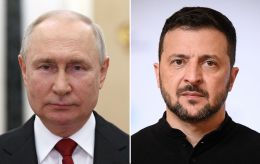Unrecognized Transnistria marks 35 years with military parade
 Photo: Military parade in honor of the 35th anniversary of unrecognized Transnistria (screenshot)
Photo: Military parade in honor of the 35th anniversary of unrecognized Transnistria (screenshot)
On September 2, a military parade was held in Tiraspol to mark the 35th anniversary of the so-called republic. Such an event had not taken place for four years, NewsMaker reports.
The administration of Tiraspol stated that more than a thousand servicemen from the local garrison took part in the ceremonial parade.
Units of unrecognized structures, as well as cadets and female formations, marched through the central square. Neither the administration in Tiraspol nor the regional press provided details about the military equipment displayed at the parade.
The event took place less than a month before the parliamentary elections in Moldova.

Photo: parade in Tiraspol (screenshot)
The Bureau for Reintegration of Moldova stated that the parade had a provocative character and was aimed at undermining the sovereignty and territorial integrity of the country within its internationally recognized borders.
The media also emphasized the entirely militaristic focus of the events in Tiraspol.
The Bureau added that propaganda of hatred, shows of force, and similar actions are gaining momentum in the Transnistrian region.
"These manifestations of aggression sow panic among residents and draw attention to the current socio-economic problems of the region, which, against the backdrop of the ongoing energy and humanitarian crisis, require quick and well-thought-out solutions," the Bureau said.
The authorities of Transnistria declared their intention to seek independence with the subsequent accession to the Russian Federation.
When did the unrecognized republic appear
The so-called Transnistria declared its creation on August 25, 1991, two days before Moldova declared independence. At that time, the 14th Russian Army, under the command of Alexander Lebedev, was stationed on its territory.
That same period saw an armed conflict in the region, with separatists and the Russian army on one side and the Moldovan armed forces on the other. It reached its peak in 1992. In fact, this was Russia’s first attempt at conducting hybrid warfare.

